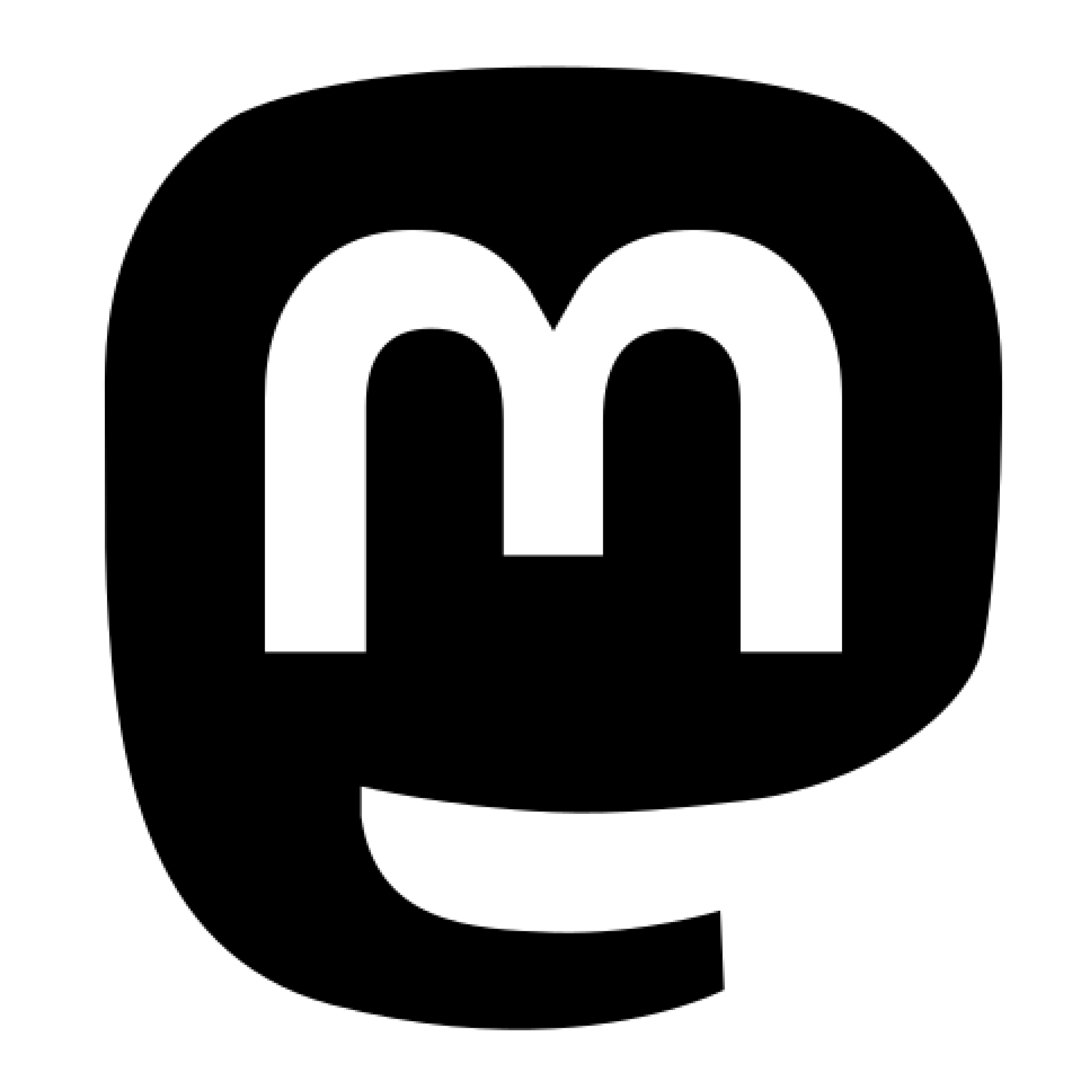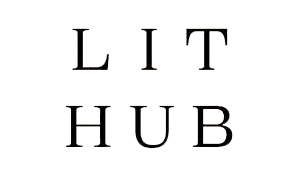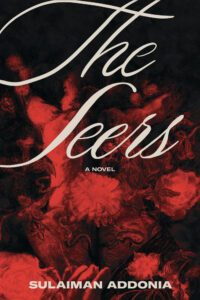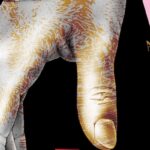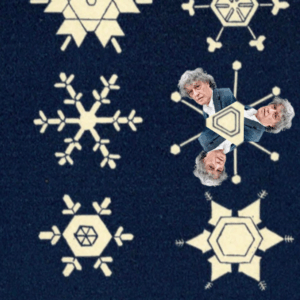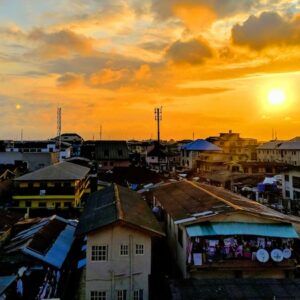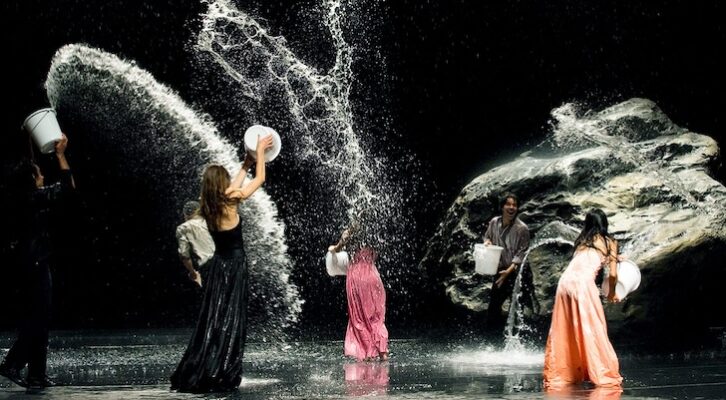
Dancing on the Page: Sulaiman Addonia on Writing in the Footsteps of Pina Bausch
“I could sense the freedom, yet I didn’t dare to march towards it.”
This first appeared in Lit Hub’s Craft of Writing newsletter—sign up here.
I moved from London to Brussels in 2009 to join my Belgian partner, accompanied by a detailed outline of my novel Silence is My Mother Tongue. I felt ambivalent about stepping away from the familiar London literary scene, which, although warm and filled with camaraderie, had also left me trapped in a mindset mainly tied to the idea of a literary novel upheld by many in the industry: a novel with strict rules, one that is expected to undergo thorough editing to ensure it reaches the reader clean and polished. And above all, a novel that ought to be subtle—a requirement that suggested it could primarily be crafted from the conscious mind, rather than granting the unpredictable, wild subconscious total control.
Once in Brussels, I remained steadfast in the only way I knew how to write a novel. Until loneliness struck.
My partner securing a full-time job, reconnecting with many of her old friends, and making new ones at work, left me feeling alone. Being a freelancer, going from one café to another to write was not conducive to forging new friendships in my new habitat. In my seclusion, I sought the imagined company of a variety of dead artists united by their hunger to take their art to new domains—among them, the German dancer and choreographer Pina Bausch.
As time passed and my isolation grew, these writers and artists formed a colony in my imagination, bringing with them their profanity, madness, sensuality, fragility, solitude, determination, and inventiveness. As well as being good company, their work also decreased my inhibitions.
I became a lover of raw novels instead of the highly polished ones when I realized that an open book with cracks, like The Story of O, allowed me to dive deeper into its essence. I appreciated the freedom such novels offered for me as a reader to explore and lose myself in their sea of fragility and strength. A book was perfect in its imperfection, I now realised.
These discoveries I made about writing and art began to influence my relationship with the literary novel I was writing, devotedly following the outline created in London.
A struggle with writing ensued. I was confronted by the limitations of the novel in the form I had once believed in. My frustrations arose from rules at the centre of Anglo-Saxon literary traditions—like “show, don’t tell,” narrative arc, and subtlety. Although these rules were necessary for many, to me they felt like chains binding me to a strict interpretation of a novel so ancient, rigid, and foreign that they stifled my imagination. My spirit called for that same realm of creativity that allowed avant-garde artists to create against the spirit of their time, artists who lived and wrote as close to the edge as possible.
I could sense the freedom, yet I didn’t dare to march towards it.
On that island of quest, living in this era yet yearning for refuge in a bygone time, Pina occupied my thoughts. She became an inspiration and a companion during my sleepless nights, often spent poring over her videos. Soon enough, I developed an aspiration: How to write a novel as if it were a piece of choreography by Pina.
What endeared me to Pina at first was not only her defiance in centering herself in a male-dominated establishment but also how she didn’t shy away from allowing her working class background that uniquely shaped her imagination to inform her creative outputs. Coming from an underprivileged background did not prevent her from experimenting with her art. Pina’s resoluteness encouraged me to pursue artwork for its own sake, even though I was expected, as a refugee and a black person, to write about war and race.
Moreover, considering that I write in public spaces like cafés and on benches or under trees in the streets, I felt a kinship and sensed a connection in that shared public environment that seemed to have inspired Pina. She learned to hear music and see movements in the people she observed at her parents’ restaurant, where she helped. She integrated this knowledge into her work, much like I attempted to weave encounters and public observations into my novels.
Soon enough, I developed an aspiration: How to write a novel as if it were a piece of choreography by Pina.
Besides these parallels, I noticed a shared personal history between us. Like Pina, who had gone through WW2, I, too, experienced war as a child in Eritrea. Since I arrived in Brussels from London, writing has revived my childhood traumas, as if my words are the seeds feeding these traumas caged in my memory. They’ve grown out of my gaze and found a home in my art. I felt pain with every word I wrote.
Yet, the way Pina incorporated her war experience into her work has demonstrated to me how traumas can be channelled into art, resulting in multi-layered, bold, and exhilarating pieces. I observed this in many of her choreographies, where there is a sudden eruption of fear for the unseen and the unheard. I perceived it in the ghosts of wars that come alive in her dancers’ pores. I noticed it in the way the dancers’ bodies collide with their surroundings, as if every object possesses a living memory of past violence. The light pouring from Pina’s skin, as if her veins were smouldering to the tunes of music that set her body on fire, made me see that there is beauty in writing while in pain. Her work made me believe that art gives voice to wounds and nuance to memories of conflict.
I sensed Pina and I saw each other across languages, ages, genres, cultures, genders, borders and boundaries, and life and death. Admitting my vulnerabilities to her was a step towards free writing.
The more I studied her performance of Café Muller in those nights when sleep evaded me, the more I yearned to write like the way she danced. I imagined writing sentences the way she moved around the set of Café Muller, erratic, here and there, her feet barely touching the floor, as she pranced between the tables, brushing against chairs, amassing new wounds along with a new creation. Art leaves traces. The way she speeds around the café, her bones visible through her white slip, as if pulled along by her subconscious, gives me the impression that she is an artist elevated by fragility. This is her power that I long to emulate. The power of surrendering to our unconscious, to art, to the moment, to instinct. I dream of my words to drift in the air, barely touching my pages, like her feet. I fear rootedness for my words. Being settled in one place has never been a part of me.
As if the only way to integrate Pina’s style into my writing was to write with my body, I experimented in the middle of the night, dancing with my hands and creating random movements, imagining I was on the set of Café Müller.
Then, 2020 came. With the café where I write shut due to COVID measures, I found myself, for the first time, without a desk to write. One sunny afternoon in March, during the first lockdown in Brussels, I stood in front of a pond and wrote the first sentence of The Seers on my iPhone. From there, my imagination took over and slowly whirled toward the edge of what a novel could be, moving away from the safe centre, where I danced on the pages of my new book as if my fingers were Pina’s toes.
______________________________________
The Seers by Sulaiman Addonia is available via Coffee House Press.
Sulaiman Addonia
Sulaiman Addonia is an Eritrean-Ethiopian-British novelist. His first novel, The Consequences of Love, shortlisted for the Commonwealth Writers' Prize, was translated into more than 20 languages. Silence is My Mother Tongue, his second novel, has been longlisted for the 2019 Orwell Prize for Political Fiction. He currently lives in Brussels where he has launched a creative writing academy for refugees and asylum seekers, and the Asmara-Addis Literary Festival (In Exile).






